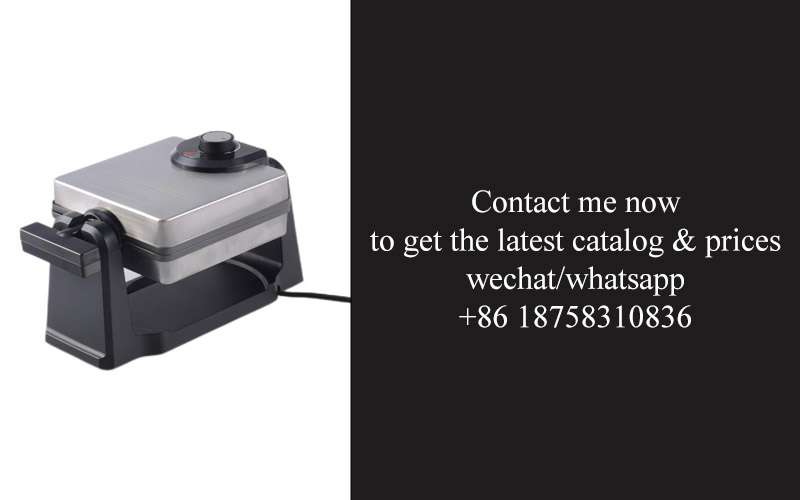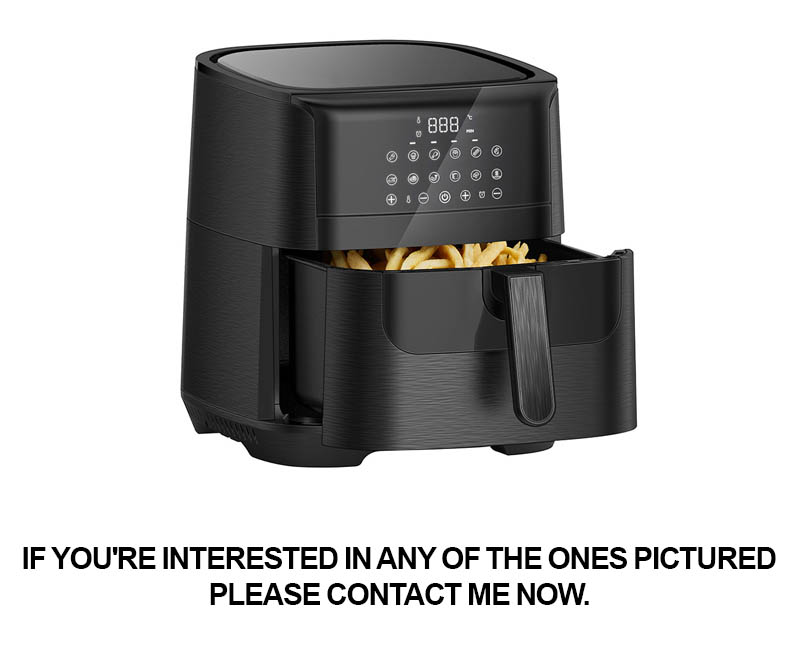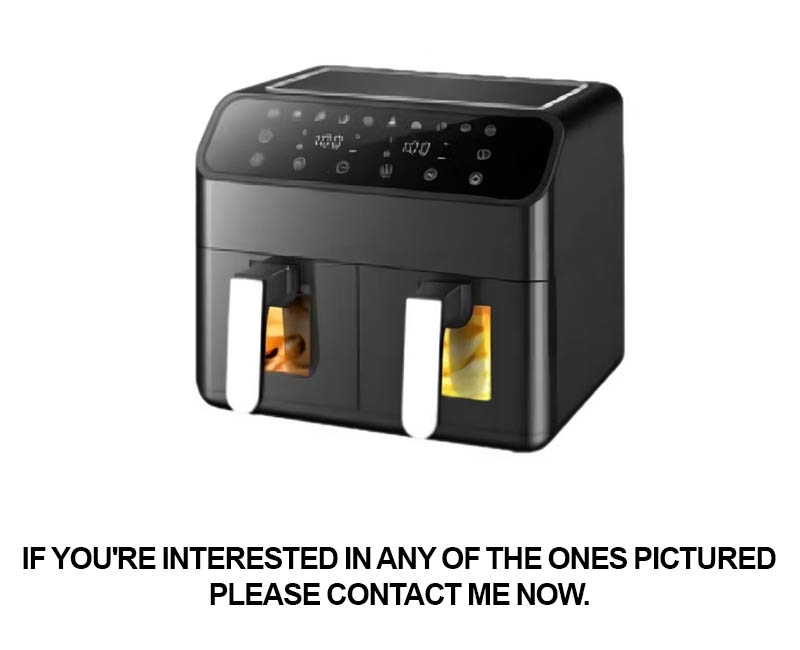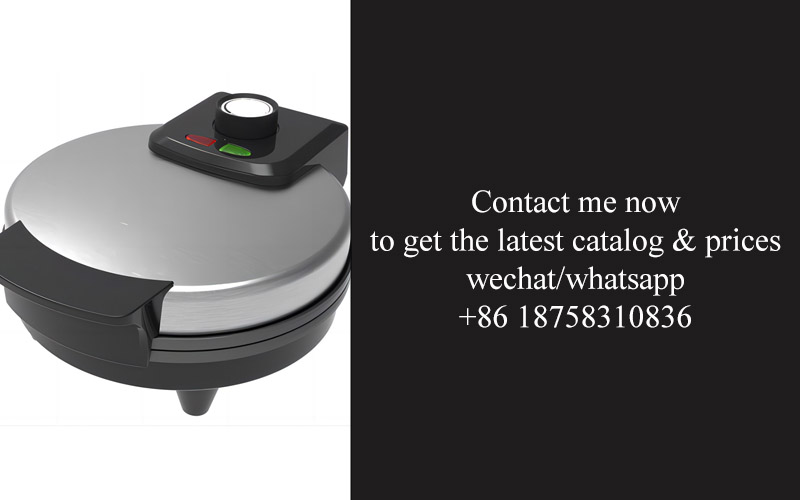Address
304 North Cardinal
St. Dorchester Center, MA 02124
Work Hours
Monday to Friday: 7AM - 7PM
Weekend: 10AM - 5PM
Address
304 North Cardinal
St. Dorchester Center, MA 02124
Work Hours
Monday to Friday: 7AM - 7PM
Weekend: 10AM - 5PM

As the heart of the home, the kitchen has always been a place where innovation thrives. From the earliest days of cooking over open flames to today’s high-tech appliances, the kitchen has seen countless advancements that have transformed how we prepare and enjoy our meals. In this ever-evolving landscape, the integration of LFGB compliant non-stick coatings in kitchen appliances is not just a trend; it’s a game-changer for both consumers and the industry. This shift represents a significant step towards healthier, more sustainable, and efficient cooking experiences, promising a future where every meal is crafted with care and cutting-edge technology.
Revolutionizing Kitchen Appliances: The Rise of LFGB Compliant Non-Stick Coatings
In the ever-evolving world of kitchen appliances, one innovation is poised to redefine how we cook and care for our kitchens—LFGB compliant non-stick coatings. These coatings are not just a surface treatment; they represent a leap forward in both safety and performance, making their presence felt across Europe and beyond.
The demand for kitchen appliances that prioritize health and sustainability is on the rise, and LFGB compliant non-stick coatings are at the forefront of this movement. These coatings, adhering to the stringent German Food, Drug, and Cosmetic Act (LFGB), ensure that the products we use in our homes are safe for everyday use, free from harmful substances like PFOA.
Gone are the days when non-stick coatings were a mere convenience; now, they are a symbol of a new era in kitchen technology. The appeal of these coatings lies in their ability to combine ease of cooking with peace of mind. No more worrying about food sticking to pans or the potential health risks associated with older coatings.
In the heart of Europe, where the LFGB standard is the gold standard for food-safe materials, consumers are increasingly seeking out kitchen appliances that bear this mark of quality. The European market, with its discerning consumers, has been quick to embrace the benefits of LFGB compliant non-stick coatings, driving a wave of innovation in the industry.
The non-stick coating market has seen a remarkable transformation, moving away from traditional coatings that contained harmful chemicals to more eco-friendly alternatives. The shift towards LFGB compliance has been a catalyst for this change, pushing manufacturers to develop products that are not only safe but also environmentally responsible.
The benefits of LFGB compliant non-stick coatings are manifold. They provide a seamless cooking surface that reduces the need for excessive oil, making meals healthier. The durability of these coatings ensures that they last longer, reducing the frequency of replacements and thus, the environmental impact. Moreover, the ease of cleaning these pans is unparalleled, making kitchen chores a breeze.
In the United States, the appeal of LFGB compliant non-stick coatings is equally strong. American consumers, who are known for their preference for high-quality, health-conscious products, have been quick to recognize the value of these coatings. The market for LFGB compliant kitchen appliances is growing, driven by the increasing awareness of health and safety issues.
But it’s not just about safety and health; these coatings are also a game-changer in terms of cooking performance. The superior non-stick qualities mean that food releases effortlessly, allowing for a smoother cooking experience. This is particularly beneficial for delicate dishes that can easily break or stick to traditional pans.
The rise of LFGB compliant non-stick coatings has also spurred a wave of innovation in kitchen appliance design. Manufacturers are now exploring new ways to integrate these coatings into a variety of products, from cookware to bakeware. The possibilities are endless, and the end result is a kitchen that is both functional and stylish.
Innovation, however, is not without its challenges. The development of LFGB compliant non-stick coatings requires a high level of expertise and precision. Manufacturers must navigate complex chemical formulations and production processes to ensure that the final product meets the rigorous standards set by the LFGB.
Despite these challenges, the industry is rising to the occasion. Companies are investing in research and development to perfect their LFGB compliant non-stick coatings, ensuring that they offer the best possible performance and longevity. The result is a competitive market where consumers have a wide range of high-quality, safe options to choose from.
As we look to the future, it’s clear that LFGB compliant non-stick coatings are here to stay. They are not just a trend; they are a cornerstone of the modern kitchen. With their health benefits, environmental considerations, and superior cooking performance, these coatings are revolutionizing the way we interact with our kitchen appliances.
In a world where health and sustainability are at the forefront of consumer concerns, LFGB compliant non-stick coatings offer a compelling solution. They bridge the gap between convenience and responsibility, providing a cooking experience that is both enjoyable and worry-free. As the market continues to grow, we can expect to see even more innovative products that make cooking a joy and a pleasure, all while keeping our health and the environment in mind.

In the ever-evolving world of kitchen appliances, a revolution is brewing that promises to redefine the way we cook and enjoy our meals. Picture this: sleek, smart kitchen gadgets that not only enhance the cooking experience but also prioritize health and safety. This is the future of cooking, and it’s being shaped by advancements in materials and technologies that are not just innovative, but also responsibly designed.
From the humble countertop to the high-tech kitchen, every appliance is set to undergo a transformation. Imagine a world where the fear of damaging your favorite pan is a thing of the past, replaced by cookware that’s as forgiving as it is functional. That’s the promise held by the rise of LFGB compliant non-stick coatings, a game-changer for both professionals and home chefs alike.
The European market, known for its stringent quality standards, has long been a hotbed for groundbreaking kitchen appliance technology. Here, the introduction of LFGB compliant non-stick coatings has sparked a new wave of excitement, as consumers and industry leaders alike embrace the benefits these coatings bring. But what exactly does LFGB compliance entail, and how does it affect the products we use every day?
LFGB, or Lebensmittel- und Bedarfsgegenstände Gesetze, is a German law that sets the highest standards for the safety of food contact materials. This means that LFGB compliant non-stick coatings are free from harmful substances like PFOA (perfluorooctanoic acid), a chemical that has raised health concerns due to its potential environmental and health impacts. By choosing LFGB compliant appliances, consumers are not just selecting a product; they are making a choice that aligns with their values and contributes to a safer kitchen environment.
As the European Union continues to push for stricter regulations, the demand for LFGB compliant non-stick coatings is skyrocketing. American consumers, who are increasingly aware of the importance of health and safety, are also taking note. The crossover appeal of these coatings has led to a surge in popularity, as kitchens across the globe are becoming safer and more eco-friendly.
The non-stick coating revolution isn’t just about eliminating harmful chemicals; it’s also about improving the cooking experience. Imagine cooking a perfect omelet with a flick of the wrist, or sautéing vegetables with no sticking at all. LFGB compliant non-stick coatings make these dreams a reality, allowing for healthier cooking with less oil, which can lead to lower calorie intake and a heart-healthy diet.
But the benefits of these coatings don’t stop at the kitchen counter. The ease of cleaning that comes with non-stick surfaces means less time spent scrubbing and more time enjoying your meal. For those who love to cook but don’t enjoy the cleanup, LFGB compliant non-stick coatings are a godsend.
As technology advances, the capabilities of LFGB compliant non-stick coatings are expanding. We’re seeing the integration of smart features that allow these appliances to be more than just tools; they’re becoming part of a connected kitchen ecosystem. Imagine a non-stick skillet that adjusts its cooking temperature based on the recipe you’re following or a frying pan that knows exactly how much oil you need for optimal results.
In the future of cooking, sustainability will play a crucial role. The move towards LFGB compliant non-stick coatings is not only about creating a safer product but also about considering the long-term impact on the environment. These coatings are designed to be durable and long-lasting, reducing the need for frequent replacements and ultimately decreasing waste.
The kitchen, once a place of tradition and simplicity, is now a laboratory of innovation. As we peek into the future, we see a landscape filled with possibilities. From energy-efficient stoves to induction cooktops, and now LFGB compliant non-stick coatings, the kitchen of tomorrow promises to be a space where technology and culinary art coexist in perfect harmony.
As consumers, we have the power to shape this future. By choosing LFGB compliant kitchen appliances, we are not only investing in our health and the health of our loved ones but also supporting a global movement towards responsible product design. The rise of LFGB compliant non-stick coatings is more than a trend; it’s a testament to the fact that cooking can be both enjoyable and sustainable. It’s a glimpse into the future of cooking, where every meal is a step towards a better world.

In today’s fast-paced world, where health and safety are paramount, the concept of LFGB compliance in kitchen appliances has become a beacon of trust for consumers. This stringent standard, derived from the German Food, Drug, and Cosmetics Act, ensures that products meet the highest safety and quality standards. For consumers, understanding what LFGB compliance entails is not just about knowing a certification; it’s about making informed choices for their families’ well-being.
LFGB, which stands for Lebensmittel- und Bedarfsgegenstände-Gesetz, translates to the Food, Drug, and Cosmetic Act in English. It was established to protect human health and the environment from harmful substances in products that come into contact with food, drugs, and cosmetics. When it comes to kitchen appliances, this includes everything from cookware to dishwashers.
The LFGB compliance process involves rigorous testing and certification, ensuring that appliances are free from hazardous substances like lead, cadmium, and PFOA, which are often found in non-stick coatings. These substances have been linked to various health issues, and the LFGB standard is designed to eliminate such risks.
For consumers, LFGB compliance means peace of mind. It guarantees that the cookware they use for their daily meals is not only safe to use but also free from harmful chemicals. Imagine cooking a delicious meal for your family, knowing that the non-stick coating on your pan is not leaching any toxic substances into your food.
The standard also covers the materials used in the construction of kitchen appliances, ensuring that they are not only safe but also durable. This includes the metals used in cookware, as well as the plastics and glues that are often part of the appliance’s design. Knowing that these materials meet LFGB standards means that the appliance is not just safe to use, but also built to last.
Moreover, LFGB compliance goes beyond the immediate safety of the consumer. It also addresses the long-term environmental impact of kitchen appliances. By ensuring that appliances are free from harmful substances, the LFGB standard helps to prevent pollution and the release of toxic chemicals into the environment.
One of the key aspects of LFGB compliance is the testing of non-stick coatings. These coatings are a staple in many kitchens, and their safety has been a topic of concern for years. The LFGB standard mandates that non-stick coatings must be free from PFOA, a chemical that has been linked to cancer and other health issues. This means that when you choose an LFGB-compliant non-stick pan, you’re not just choosing a cooking tool; you’re making a conscious decision to avoid potential health risks.
In addition to the safety aspect, LFGB-compliant kitchen appliances often boast superior performance. The materials used and the manufacturing processes are designed to ensure that these appliances not only meet safety standards but also deliver on functionality. This means that consumers can enjoy the convenience of non-stick cooking without worrying about the health implications.
The LFGB standard also emphasizes the importance of labeling. Appliances that are LFGB-compliant must clearly display the certification mark, making it easy for consumers to identify and choose safe products. This transparency is crucial in empowering consumers to make informed decisions about the products they bring into their homes.
For brands, achieving LFGB compliance is a significant achievement. It not only demonstrates their commitment to safety and quality but also opens up opportunities in the European market, where the standard is widely recognized and respected. This can be a significant competitive advantage in a market that is increasingly health-conscious.
In conclusion, LFGB compliance is more than just a certification; it’s a promise to consumers that the kitchen appliances they use are safe, reliable, and environmentally friendly. It’s a testament to the brand’s dedication to quality and a signal to consumers that they can trust the product they’re purchasing. As the kitchen continues to evolve, with new technologies and innovations emerging, the importance of LFGB compliance in ensuring consumer safety and satisfaction will only grow.

The evolution of non-stick coatings in kitchen appliances has been a fascinating journey, one that reflects both technological advancements and a growing awareness of health and environmental concerns. Let’s delve into how these coatings have transformed from the traditional to the LFGB compliant.
Once upon a time, the allure of non-stick cookware was simple: food didn’t stick, cleaning was a breeze, and cooking became a more enjoyable experience. The secret behind this magic was a chemical called perfluorooctanoic acid (PFOA), which formed a durable, non-reactive layer on the surface of cookware. However, as time passed, concerns about the potential health risks of PFOA began to surface.
Research indicated that PFOA, a known carcinogen, could leach into food and pose health hazards to consumers. This revelation sparked a wave of change in the industry, prompting manufacturers to seek safer alternatives. Enter the era of PFOA-free non-stick coatings, which promised the same convenience without the health risks.
The transition from PFOA-based coatings to PFOA-free alternatives was not without its challenges. Companies had to invest in new research and development to find materials that could mimic the non-stick properties of PFOA without the associated health concerns. The result was a range of coatings like polytetrafluoroethylene (PTFE), also known as Teflon, and other eco-friendly options like ceramic and silicone.
These new coatings offered a safer cooking experience, but they also brought about a new set of considerations. For instance, while PTFE is heat-resistant and provides a non-stick surface, it can degrade at high temperatures, releasing harmful fumes. This realization led to further innovation, with manufacturers exploring ways to enhance the stability and longevity of non-stick coatings.
Enter the LFGB standard, a benchmark for safety and quality in the European market. The LFGB, or Lebensmittel- und Futtermittelbundesamt (Food and Feed Code), is a set of regulations that ensure products meet strict safety standards. For non-stick coatings, LFGB compliance means that the materials used are safe for food contact, free from harmful substances, and durable over time.
LFGB compliant non-stick coatings must undergo rigorous testing to ensure they meet the following criteria:
As consumers become more health-conscious and environmentally aware, the demand for LFGB compliant non-stick coatings has surged. These coatings offer peace of mind, knowing that the cookware used in daily cooking is not only convenient but also safe for the entire family.
The shift towards LFGB compliant non-stick coatings has also driven innovation in the kitchen appliance industry. Manufacturers are now exploring new materials and technologies that not only meet the LFGB standards but also enhance the cooking experience. For example, some coatings are now designed to be more scratch-resistant, while others are being developed to be even more heat-resistant.
In conclusion, the evolution of non-stick coatings from traditional PFOA-based materials to LFGB compliant alternatives is a testament to the industry’s commitment to safety, health, and environmental responsibility. As these coatings continue to evolve, they promise to bring a new level of confidence to the kitchen, where the focus is on delicious meals and worry-free cooking.

LFGB compliant non-stick coatings have become a cornerstone in the evolution of kitchen appliances, offering a host of benefits that resonate with both health-conscious consumers and culinary enthusiasts alike. Here’s a closer look at what these coatings bring to the table:
In the realm of cooking, non-stick coatings have long been a game-changer. They eliminate the need for excessive oil or butter, making the cooking process healthier and more efficient. The transition to LFGB compliant coatings has marked a significant leap forward, ensuring that these benefits are accompanied by peace of mind regarding safety and sustainability.
One of the most immediate benefits is the health aspect. Traditional non-stick coatings often contained perfluorooctanoic acid (PFOA), a chemical that has been linked to various health issues. With LFGB compliance, consumers can now enjoy non-stick surfaces without the worry of harmful substances leaching into their food. This shift not only aligns with a growing preference for healthier eating habits but also reassures those with sensitivities to such chemicals.
Durability is another key advantage. LFGB compliant non-stick coatings are engineered to withstand the rigors of everyday cooking. They are less prone to scratching and wear compared to older coatings, which means that your cookware will maintain its non-stick properties for longer. This longevity is a win for both the consumer’s wallet and the environment, as it reduces the frequency of replacement.
Ease of cleaning is a universal appeal of non-stick coatings. The surface’s smooth texture means that food particles are less likely to stick, making dishes a breeze to wash. With LFGB compliance, this convenience is matched by an increased resistance to stains and discoloration, ensuring that your cookware looks pristine even after years of use.
Cooking performance is enhanced by the consistent heat distribution that LFGB compliant non-stick coatings provide. They maintain a stable temperature, preventing hot spots that can burn food or leave unevenly cooked results. This allows for more precise cooking, whether you’re sautéing delicate vegetables or searing a juicy steak.
Energy efficiency is also a significant benefit. Non-stick cookware requires less heat to achieve the desired cooking temperature, which translates to lower energy consumption. This is particularly beneficial for those who are conscious of their carbon footprint and looking to reduce their overall energy usage.
For those who love to experiment with their cooking, the versatility of LFGB compliant non-stick coatings is a major plus. These coatings are suitable for a wide range of cooking methods, including induction, which was not always the case with older non-stick technologies. This opens up new possibilities in the kitchen, allowing for a greater variety of recipes and cooking styles.
The environmental impact of kitchen appliances is a growing concern. LFGB compliant non-stick coatings are often made with more sustainable materials, reducing the ecological footprint of cookware production. This is not only good for the planet but also for those who are looking for eco-friendly alternatives in their kitchenware.
Lastly, the aesthetic appeal of LFGB compliant non-stick coatings cannot be overlooked. With a variety of finishes and colors available, they add a touch of style to any kitchen. The sleek, modern look is a testament to the technological advancements that have been made in cookware design.
In conclusion, the transition to LFGB compliant non-stick coatings has brought about a multitude of benefits that cater to both practicality and consumer values. From health and safety to performance and sustainability, these coatings are setting a new standard for kitchen appliances that is sure to resonate with consumers for years to come.

In the ever-evolving landscape of kitchen appliances, understanding the latest market trends and consumer demands is crucial. Let’s delve into the insights that reveal the trajectory of the market, highlighting key trends and the rising demand for LFGB compliant non-stick coatings.
The rise of health-conscious consumers has significantly influenced the kitchen appliance market. With a growing awareness of the impact of chemicals on health, consumers are increasingly seeking products that prioritize safety and sustainability. This shift has led to a surge in demand for LFGB compliant non-stick coatings, which offer a healthier alternative to traditional coatings.
Smart kitchen technology is another major trend shaping the market. Integration of appliances with smart features, such as Wi-Fi connectivity and voice control, is becoming more prevalent. LFGB compliant non-stick coatings can enhance the performance of these smart appliances, making them more durable and user-friendly.
The demand for energy-efficient appliances is on the rise, as consumers look to reduce their carbon footprint. LFGB compliant non-stick coatings contribute to energy efficiency by allowing for quicker and more even cooking, which in turn reduces the need for longer cooking times and higher temperatures.
The kitchen appliance market is also witnessing a trend towards customization and personalization. Consumers are seeking appliances that cater to their specific needs and preferences. LFGB compliant non-stick coatings can be tailored to different types of cookware, offering a versatile and adaptable solution for various cooking styles.
In the wake of the global pandemic, there has been a heightened focus on hygiene and cleanliness in the kitchen. LFGB compliant non-stick coatings are inherently easier to clean, which is a significant factor for consumers concerned about the spread of germs and bacteria. This aspect has further increased the demand for these coatings.
The market for eco-friendly appliances is expanding rapidly, with consumers gravitating towards products that are environmentally sustainable. LFGB compliant non-stick coatings are free from harmful substances like PFOA, which are known to be toxic and harmful to the environment. This eco-friendly aspect is a strong selling point for manufacturers looking to tap into this growing market segment.
The rise of online shopping has also had a profound impact on the kitchen appliance market. With more consumers turning to online platforms for their purchases, there is a greater emphasis on product reviews and ratings. LFGB compliant non-stick coatings are often praised for their performance and safety, which can positively influence purchasing decisions.
The demand for multifunctional appliances is on the rise, as consumers seek to maximize their kitchen space and streamline their cooking processes. LFGB compliant non-stick coatings can be applied to a wide range of appliances, from cookware to bakeware, making it easier for manufacturers to create versatile and appealing products.
The kitchen appliance market is also influenced by demographic shifts. For instance, the aging population is driving the demand for appliances that are easy to use and maintain. LFGB compliant non-stick coatings can contribute to the ease of use by reducing the need for scraping and scrubbing, which can be challenging for older individuals.
Lastly, the global kitchen appliance market is becoming more competitive, with new players entering the market and established brands expanding their product lines. This competition has led to a greater focus on innovation and differentiation, with LFGB compliant non-stick coatings emerging as a key differentiator for many brands.
In conclusion, the kitchen appliance market is experiencing a multifaceted evolution, driven by health consciousness, smart technology, energy efficiency, customization, hygiene concerns, environmental sustainability, online shopping trends, multifunctionality, demographic shifts, and increased competition. LFGB compliant non-stick coatings are at the forefront of this transformation, offering a safer, more efficient, and eco-friendly solution for consumers around the world.

The kitchen appliance industry is constantly evolving, and with it, a wave of innovative ideas is shaping the future of cooking. From smart tech integration to eco-friendly designs, here are some of the most forward-thinking concepts currently gaining traction:
Smart Integration with AIModern kitchens are no longer just places to cook; they’re hubs of technological innovation. Appliances with AI capabilities are becoming increasingly common, offering features like voice-controlled commands and predictive maintenance. Imagine a refrigerator that not only suggests recipes based on the ingredients you have but also orders more from your preferred store when it detects that you’re running low.
Energy-Efficient and Sustainable DesignAs environmental concerns grow, so does the demand for energy-efficient kitchen appliances. Innovators are focusing on designs that reduce energy consumption, from induction cooktops that use up to 75% less energy than traditional electric burners to refrigerators with LED lighting that consume a fraction of the electricity of incandescent bulbs. Moreover, the use of sustainable materials in the construction of these appliances is becoming more prevalent, ensuring that they have a minimal impact on the planet.
Personalized Cooking ExperienceCustomization is key in today’s consumer market, and kitchen appliances are no exception. Innovators are developing products that cater to individual preferences and dietary needs. For instance, ovens with built-in programs for gluten-free, vegan, or low-carb cooking ensure that everyone in the household can enjoy their favorite meals without compromise. Smart cookers and pressure cookers are also gaining popularity for their ability to cook a wide variety of dishes with precision and speed.
Health and Safety FeaturesWith health consciousness on the rise, appliance manufacturers are focusing on safety and wellness features. Induction cooktops are not just energy-efficient but also safer as they don’t generate heat outside the pot, reducing the risk of burns. Air fryers have become a staple in many kitchens, providing a healthier alternative to deep-frying by using hot air to circulate around the food. Additionally, appliances with self-cleaning functions save time and effort while ensuring cleanliness.
Interactive and ConnectivityThe kitchen of the future is not just about the appliances you use but how they interact with you and with each other. Connectivity is key, with appliances that can be controlled via smartphones or tablets, allowing you to adjust settings, monitor cooking progress, and even order replacement parts. Interactive features like digital displays and touch interfaces make appliances not only functional but also a part of the home’s smart ecosystem.
Sustainability and UpgradabilityAs the lifecycle of appliances grows shorter, sustainability is becoming a crucial factor. Brands are designing appliances with modular components that can be easily replaced or upgraded, extending the life of the product. This approach not only reduces waste but also allows consumers to stay ahead of the curve with the latest features and technology.
Accessibility and InclusivityInnovations in kitchen appliances are also aiming to make cooking more accessible to everyone. From stovetops with adjustable heights to ovens with voice controls for those with physical limitations, the industry is recognizing the importance of inclusivity. Designers are focusing on creating intuitive interfaces and controls that are easy to use for all ages and abilities.
Innovative Cooling SolutionsCooling appliances are also undergoing a transformation. From refrigerators with advanced temperature control systems that maintain consistent temperatures throughout the unit to freezers that can defrost without the need for electricity, these innovations are not only energy-efficient but also user-friendly.
These innovative ideas in kitchen appliances are redefining the way we cook and live. As technology continues to advance, we can expect even more creative and sustainable solutions that make cooking an enjoyable and efficient part of our daily lives.

In the realm of kitchen appliances, a few brands have stood out not just for their products, but for their commitment to innovation and quality. Here are some success stories and market leaders that have impressed with their integration of LFGB compliant non-stick coatings.
Branding itself as a pioneer in sustainable kitchenware, GreenGrip has made a significant impact in the market. Their products, which feature LFGB compliant non-stick coatings, have resonated with environmentally conscious consumers. The brand’s story is one of resilience and innovation. After facing challenges with the transition from traditional non-stick coatings to those that comply with the LFGB standard, GreenGrip persevered, developing a unique blend that offers both performance and eco-friendliness. Their cookware has become a symbol of quality, leading to a growing customer base and a strong market presence.
KitchenCraft, another market leader, has been in the kitchen appliance industry for decades. They’ve recently updated their non-stick coated cookware line to meet LFGB standards, reflecting a commitment to safety and quality. One of their most successful products, the Infinity Pro Collection, has been a hit among consumers seeking high-performance cookware without compromising on health. The success of this collection is a testament to KitchenCraft’s ability to blend cutting-edge technology with consumer demands, leading to a robust market position.
CookEase has taken a different approach by focusing on the versatility of their LFGB compliant non-stick coatings. Their cookware line, “MultiFlex,” allows for cooking a wide range of dishes, from delicate eggs to hearty stews, without the risk of food sticking. The brand has built its reputation on this versatility, offering consumers a one-pot solution that simplifies meal prep. CookEase’s strategic marketing and emphasis on convenience have turned their products into a must-have in many households, reinforcing their position as a market leader.
HealthyCook is a relatively new entrant in the market, but they’ve made waves with their innovative use of LFGB compliant non-stick coatings. Their “FitLine” collection has been praised for its ergonomic design and superior non-stick performance. The brand’s unique selling point is their partnership with health experts, ensuring that their products are not only non-toxic but also promote healthier eating habits. This focus on health and wellness has propelled HealthyCook to become a trusted name in the industry.
In the world of professional-grade cookware, AllPro has emerged as a leader, offering a range of LFGB compliant non-stick coated pans and skillets that cater to both home chefs and professional kitchens. Their success can be attributed to their stringent quality control and attention to detail. Each product undergoes rigorous testing to meet the LFGB standards, which has helped them gain the trust of chefs and culinary professionals worldwide. The AllPro brand stands for reliability and excellence, solidifying their position at the forefront of the market.
Storybook Kitchen, a niche player, has carved out a unique spot in the market with their whimsical and artistic LFGB compliant non-stick coated cookware. Their products, while priced at a premium, have captured the hearts of those who appreciate unique kitchenware. Their marketing strategy revolves around storytelling, highlighting the origins and inspiration behind each piece. This approach has created a loyal customer base, making Storybook Kitchen a distinctive success story in the market.
Each of these brands has a unique story, but they all share a common thread: the integration of LFGB compliant non-stick coatings into their kitchen appliances. Their success stories serve as a beacon for other companies looking to innovate and meet the evolving demands of consumers. As the market continues to evolve, these brands are poised to lead the way, offering not just products, but experiences that enhance the cooking process and improve lives.

The adoption of LFGB compliant non-stick coatings in kitchen appliances is not without its challenges. Here’s a look at the hurdles faced and potential solutions:
Manufacturers often grapple with the cost implications of adhering to LFGB standards. The strict regulations and rigorous testing required to meet these standards can drive up production costs. However, innovative suppliers are finding ways to balance quality with cost-effectiveness, exploring alternative materials that can reduce expenses without compromising safety.
One common challenge is the shelf life of LFGB compliant non-stick coatings. Traditional coatings might degrade over time, leading to performance issues. Companies are addressing this by developing coatings that maintain their integrity for longer periods, ensuring appliances remain non-stick for the life of the product.
Regulatory compliance can be a complex process, especially for companies that are new to the European market. Understanding the nuances of LFGB standards and navigating the certification process requires expertise. Solution-oriented firms are partnering with regulatory consultants to ensure they meet all requirements without delay.
The transition from older non-stick coatings to LFGB compliant ones can also pose logistical challenges. Suppliers must manage inventory and ensure that older stocks are phased out without disrupting the supply chain. Strategic planning and careful coordination between manufacturers and suppliers are key to a smooth transition.
Another challenge is the environmental impact of manufacturing non-stick coatings. Many traditional coatings contain substances that are harmful to the environment. Companies are investing in more sustainable production methods and materials to minimize their ecological footprint.
Consumer education is crucial when introducing LFGB compliant products. Some consumers may be wary of changes in their kitchen appliances due to misconceptions about non-stick coatings. Brands are tackling this by providing detailed information about the benefits of LFGB compliance, emphasizing safety and sustainability.
Customization can also be a challenge. While the LFGB standards ensure a baseline of quality, some consumers prefer specific features or finishes. Manufacturers must balance standardization with customization, offering a range of options that cater to diverse preferences without compromising on compliance.
Lastly, the integration of LFGB compliant non-stick coatings into smart kitchen appliances introduces new technological challenges. Ensuring that these coatings work harmoniously with advanced features like induction cooktops or smart connectivity requires innovative engineering solutions. Companies are investing in research and development to overcome these challenges, creating a new generation of smart kitchen appliances that are both functional and eco-friendly.
In summary, the journey to implementing LFGB standards in non-stick coatings for kitchen appliances is filled with challenges. However, by embracing innovation, sustainable practices, and strategic partnerships, manufacturers are paving the way for a future where safety, performance, and environmental responsibility go hand in hand.

As we delve into the world of kitchen appliances, it’s clear that the evolution of non-stick coatings is not just a shift in technology—it’s a revolution in the way we cook and live. These coatings, once synonymous with convenience, have now become a symbol of health, sustainability, and innovation. The future of cooking with LFGB compliant non-stick coatings is bright, promising a safer, more eco-friendly kitchen experience.
The journey from traditional non-stick coatings to those that meet the stringent LFGB standards has been marked by significant advancements. These coatings are not just about the absence of harmful substances; they are about introducing new materials that enhance the cooking experience while ensuring the well-being of users.
One of the most notable changes in non-stick coatings is the move away from perfluorooctanoic acid (PFOA), a chemical once widely used in non-stick surfaces but now known to be harmful to human health and the environment. LFGB compliant non-stick coatings have stepped in to fill the void, offering a safe alternative that still provides the ease of cooking that consumers have grown to love.
These new coatings are not just safer; they also offer a range of benefits. They are more durable, meaning they last longer and maintain their non-stick properties over time. This longevity reduces the need for frequent replacements, thus minimizing waste and environmental impact. The ease of cleaning is another advantage, as these coatings are designed to release food effortlessly, making the cooking process quicker and less labor-intensive.
In the realm of market insights, trends and demand analysis are key indicators of where the industry is heading. There is a growing trend towards healthier and more sustainable kitchen appliances, with consumers increasingly seeking out products that align with their values. This shift is driven by health concerns, environmental awareness, and the desire for convenience without compromise.
The demand for LFGB compliant non-stick coatings has been skyrocketing, reflecting a broader market trend of preference for high-quality, safe, and eco-friendly products. Smart kitchen appliances equipped with these coatings are becoming more popular, as they cater to the needs of health-conscious consumers who want to enjoy their cooking experience without worrying about the potential health risks.
Innovative ideas in kitchen appliances are taking this a step further. Companies are now integrating LFGB compliant non-stick coatings with smart technology to create appliances that not only cook efficiently but also provide valuable data about the cooking process. Imagine a non-stick pan that not only prevents sticking but also adjusts its temperature based on the type of food being cooked, ensuring optimal cooking results every time.
When it comes to case studies, success stories, and market leaders, several brands have stood out. Companies like Tefal and Swiss Diamond have been pioneers in the non-stick coating industry, constantly pushing the boundaries of what’s possible. Their commitment to quality and safety has led to a loyal customer base that values the reliability of their products.
However, challenges remain in implementing LFGB standards. The transition from traditional to LFGB compliant coatings requires significant investment in research and development. Companies must also navigate complex regulatory landscapes, ensuring that their products meet the strict criteria set forth by the LFGB. Despite these challenges, the market leaders have found innovative solutions. They invest in sustainable materials, employ rigorous quality control processes, and work closely with regulatory bodies to ensure compliance.
In conclusion, the future of cooking with LFGB compliant non-stick coatings is one of promise and potential. As technology continues to advance, we can expect to see even more innovative products that make cooking healthier, easier, and more sustainable. The journey from traditional non-stick coatings to those that meet LFGB standards has been a testament to human ingenuity and a commitment to a better future. In the kitchen of tomorrow, these coatings will not only enhance our cooking experiences but also contribute to a healthier planet.